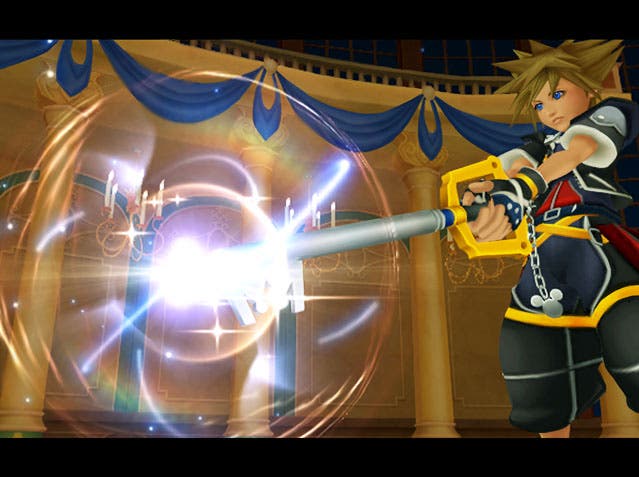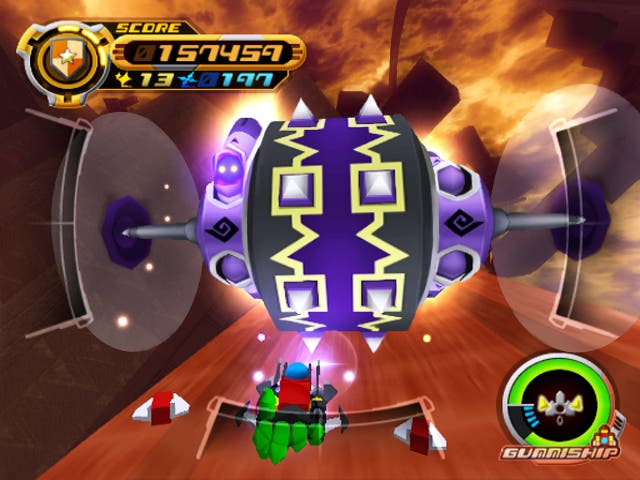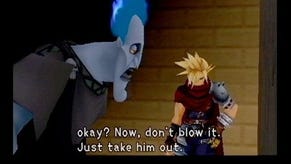Kingdom Hearts II
Worth the Walt.
If there was ever a franchise that demonstrated the ability of a quality product to overcome initial hostility, it's Kingdom Hearts. When it was initially announced that Disney and Final Fantasy characters would be prancing through action RPG worlds together, it seemed like a combination utterly unlikely to please anyone. While the cross over between fans of the two pantheons of characters is significant in Japan, in the West it is far less evident - and more importantly, the target audience of previous Disney games was much younger than the target audience for Final Fantasy, which created immediate concerns over just who the audience for Kingdom Hearts would be.
Besides, this was the almighty Disney licence - arguably the most closely guarded stable of characters, settings, trademarks and brands in the world. It was hard to see how Square Enix would be able to create the more mature, teen-and-above focused stories that would justify the use of the Final Fantasy characters, while still keeping Disney's undoubtedly eagle eyed licensing executives happy. It's not that Disney doesn't do dark; it's just that Disney, as a rule, doesn't let other people do dark with its characters. What its own film-makers may be trusted with, third party game developers most certainly are not, a fact which has lobotomised the majority of previous games based on Disney franchises.

As such, the primary achievement of the original Kingdom Hearts title wasn't that it created a style of action RPG gameplay which, although flawed, was accessible enough to appeal to a wide audience. Nor was it the creation of a variety of environments which were designed for the game, yet familiar enough to be instantly identified with their source material; nor the assembly of an all-star cast for voice acting duties, including the excellent casting decisions made when voicing Final Fantasy characters who had previously been mute in all their game outings.
No, Kingdom Hearts' shining achievement was that it integrated the two universes in a way which pleased fans of both. Perhaps because Square Enix was contributing its own characters to the project as well, Disney gave its writers the creative elbow-room they needed to create an interesting story which avoided the saccharine pitfalls that have trapped previous Disney licensed games, and which would have so greatly disappointed the Final Fantasy fanbase. The first Kingdom Hearts game was, as a result, an immense commercial success - and one which spawned a fanbase extensive enough to guarantee that sequels would be forthcoming.
Fighting Nobody

For the second outing of the franchise on PS2, there's a strong sense that the developers felt that large swathes of the gameplay weren't broken, and required no fixing. As such, Kingdom Hearts II will be instantly familiar in many key ways to those who played the first game. Combat remains an almost identical affair, for example; tweaked rather than overhauled. The camera, which was previously a frustrating manually controlled affair, has been fixed and is now far more useful and intelligent, and combat itself has been made more fluid with the introduction of a large number of new moves and combos. However, at heart the system is largely unchanged - you control one character (normally Sora, the hero of the first game, although you'll spend a while at the start in someone else's ridiculously large shoes) while two others from the Disney pantheon battle alongside you. Your control over your team-mates is minimal, but you can perform special moves which join your abilities with theirs and give you access to more powerful battle skills.
Although the tweaks to the camera and the addition of the various flashy new skills are welcome changes to the Kingdom Hearts formula, one rather less welcome alteration is that the battle system - which wasn't exactly complex to begin with - has actually been simplified to some degree in this game. It's entirely fair to point out that there are encounters in KH2 which can be cleared by repeatedly mashing one button on the pad, and, indeed, that's pretty much all you can do in the game for some time. It's not that other abilities aren't there - aside from the combos and special moves mentioned, you can also dodge or block enemy attacks, and even counter attacks with the right timing. The problem is that if you choose, you can finish off many encounters without ever resorting to such things.
In a sense, that might actually be a fair approach for the game to take. Given the wide appeal of the franchise, making the combat accessible to everyone isn't necessarily a bad idea - but for older or more experienced players, it's a little disheartening to realise that you could probably clear out an entire room teeming with enemies without ever actually having to think about what you're doing. You'd also come out on full health, most likely, since enemies drop health orbs very regularly. Admittedly, turning the difficulty up does make things a bit more interesting, but the game is still not terribly challenging. None of which changes the fact that you can still have a lot of fun stringing together moves and combos, and stylishly defeating the legions of foes which KH2 throws at you - but this isn't a game you'll be playing for any kind of sense of accomplishment from the battle system.





